
The ZX Spectrum is an 8-bit home computer that was developed by Sinclair Research. It was released in the United Kingdom on 23 April 1982, and became Britain's best-selling microcomputer.
Miner Willy is the protagonist in a series of platform games for the ZX Spectrum, MSX, Amstrad CPC and the Commodore 64 home computers. The first two games - Manic Miner and Jet Set Willy were written by Matthew Smith during the early 1980s.
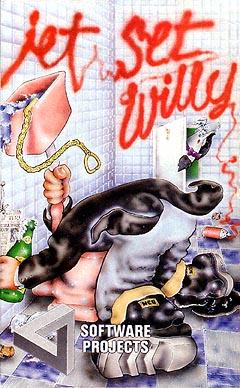
Jet Set Willy is a platform video game originally written by Matthew Smith for the ZX Spectrum home computer. It was published in 1984 by Software Projects and ported to most home computers of the time.
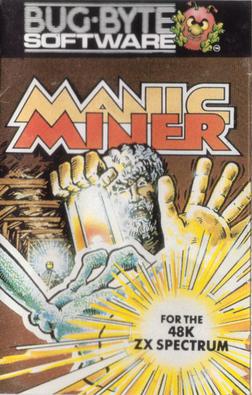
Manic Miner is a platform video game written for the ZX Spectrum by Matthew Smith. It was published by Bug-Byte in 1983, then later the same year by Software Projects. The first game in the Miner Willy series, the design was inspired by Miner 2049er (1982) for the Atari 8-bit family. Retro Gamer called Manic Miner one of the most influential platform games of all time, and it has been ported to numerous home computers, video game consoles, and mobile phones.

Krome Studios Melbourne, originally Beam Software, was an Australian video game development studio founded in 1980 by Alfred Milgrom and Naomi Besen and based in Melbourne, Australia. Initially formed to produce books and software to be published by Melbourne House, a company they had established in London in 1977, the studio operated independently from 1987 until 1999, when it was acquired by Infogrames, who changed the name to Infogrames Melbourne House Pty Ltd.. In 2006 the studio was sold to Krome Studios.
Ocean Software Ltd was a British software development company that became one of the biggest European video game developers and publishers of the 1980s and 1990s.
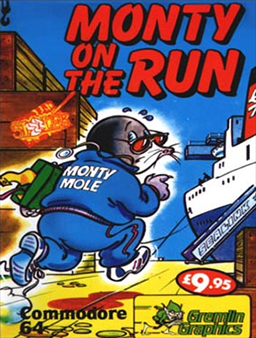
Monty on the Run is a computer game created by the software house Gremlin Graphics and released in 1985 for the Commodore 64, ZX Spectrum, Amstrad CPC and Commodore 16, written by Peter Harrap for the ZX Spectrum with the iconic in-game music on the Commodore 64 provided by Rob Hubbard. It is the third game in the Monty Mole series.

Jet Set Willy II: The Final Frontier is a platform game released 1985 by Software Projects as the Amstrad CPC port of Jet Set Willy. It was then rebranded as the sequel and ported other home computers. Jet Set Willy II was developed by Derrick P. Rowson and Steve Wetherill rather than Jet Set Willy programmer Matthew Smith and is an expansion of the original game, rather than an entirely new one.
Software Projects was a computer game development company which was started by Manic Miner developer Matthew Smith, Alan Maton and Colin Roach. After leaving Bug-Byte as a freelance developer, Smith was able to take the rights to his recently developed Manic Miner game with him, due to an oversight in his freelance contract. Software Projects was then able to market and publish the ZX Spectrum hit game separately from Bug-Byte. Their logo was a Penrose triangle.
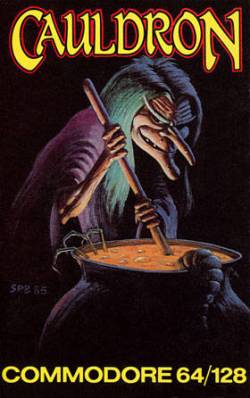
Cauldron is a video game developed and published by British developer Palace Software in 1985 for the ZX Spectrum, Commodore 64, and Amstrad CPC home computer. It contains both platform game and horizontally scrolling shooter sections. Players control a witch who aims to become the "Witch Queen" by defeating the "Pumpking"

Bug-Byte Software Ltd. was a video game company founded in 1980 in Liverpool, initially producing software for the Acorn Atom and ZX80. Bug-Byte's first hit was Don Priestley's Mazogs which was one of the most successful titles for the ZX81. In 1983, it published Manic Miner, considered to be one of the most influential platform games of all time. The company went into liquidation in 1985 but their name and logo were purchased by Argus Press PLC for use as a budget software label.
Brian Howarth is a British video game designer and computer programmer. He wrote many interactive fiction computer games in the early 1980s in a series called Mysterious Adventures. He was born in Blackpool in 1953.
The ZX Spectrum's software library was very diverse. While the majority of the software produced for the system was video games, others included programming language implementations, Sinclair BASIC extensions, databases, word processors, spread sheets, drawing and painting tools, and 3D modelling tools.

Styx is a maze shoot 'em up game published by Bug-Byte Software in 1983. It was the first ZX Spectrum game written by Matthew Smith, and the first of his three-game contract with the company. He went on to write Manic Miner in the same year.
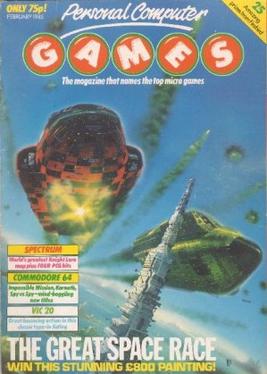
Personal Computer Games was a multi-format UK computer games magazine of the early/mid-1980s published by VNU.
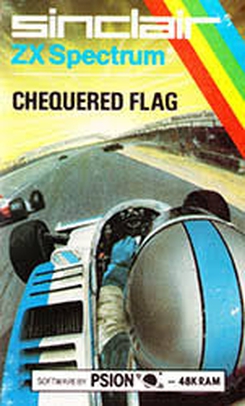
Chequered Flag is a racing video game developed by Psion Software and published by Sinclair Research in 1983. It was the first driving game published for the ZX Spectrum and one of the first computer car simulators.
Addictive Games was a UK video game publisher in the 1980s and early 1990s. It is best known for the Football Manager series of games created by company founder Kevin Toms. The company was originally based in Milton Keynes, England, and later relocated to Bournemouth, in southern England.
Videogame Nation was a UK exhibition looking at the history of British videogames. It showed how videogames have progressed over more than 30 years. Visitors were able to play a wide selection of games including Jet Set Willy, Sensible Soccer, Tomb Raider and Grand Theft Auto. The exhibition highlighted the key people and companies which have contributed to British gaming since its inception.
Roland was a game character developed in 1984 by Alan Sugar, CEO of Amstrad, and Jose Luis Dominguez, a Spanish game designer. The character was named for Roland Perry, a computer engineer who worked for Amstrad. The idea was to have one recognizable character in a number of different computer games in a bid to have the Amstrad CPC compete with the ZX Spectrum and the Commodore 64.











